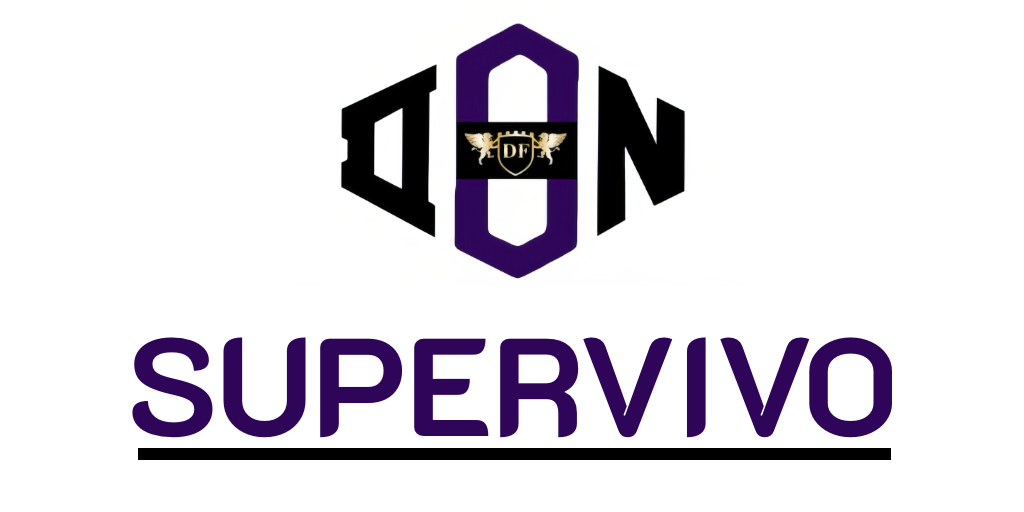As our reliance on technology continues to grow, so too does the issue of electronic waste, commonly referred to as tech trash. Understanding what tech trash recycles into is crucial in addressing this escalating problem. In 2019, approximately 53.6 million metric tonnes of e-waste were generated globally, with projections suggesting that this figure could soar to an alarming 74 million by 2030. This trend underscores the urgent need for effective electronic recycling solutions that can transform discarded devices into valuable resources. Through innovative practices and eco-friendly disposal of electronics, we can begin to see tech waste not just as a burden, but as an opportunity to contribute positively to our environment and economy.
The Journey of Tech Waste: An Overview
The journey of tech waste begins when electronic products reach the end of their useful lives. Discarded electronics require careful handling to ensure they are processed responsibly. The first step in the cycle involves the collection of these items, often through various collection points or designated drop-off locations.
Once collected, the tech waste is transported to certified e-waste recycling centres. Here, professional teams sort the discarded products by types of materials, such as plastics, metals, and glass. This process is crucial in facilitating effective Electronic Recycling Solutions. Proper sorting guarantees that valuable materials can be recovered efficiently, while hazardous components are managed correctly, minimising environmental risks.
The dismantling process plays a critical part in tech waste repurposing. Individual components are meticulously separated to ensure that recyclable materials can be reused in new products. This not only conserves resources but also reduces the need for new raw materials, which can have significant environmental impacts. Ensuring adherence to proper recycling protocols ultimately supports sustainable practices and fosters a healthier planet.

Understanding Tech Trash and Its Impact on the Environment
The world of technology offers numerous conveniences, yet it also generates significant waste known as tech trash. This electronic waste, or e-waste, poses a considerable challenge due to its complex composition. Many devices contain a plethora of toxic substances, including lead, mercury, and cadmium. When these materials leach into soil and water, they create a concerning Environmental Impact of E-Waste, affecting both ecosystems and human health.
According to estimates by the United Nations, only a mere 17.4% of e-waste is processed through formal recycling channels. This alarming statistic underlines the urgency of addressing the issue. Improper disposal of electronic items leads not only to pollution but also to environmental degradation, which can have dire consequences for communities and wildlife alike.
Engaging in Sustainable E-Waste Management becomes paramount in combating these issues. By embracing responsible disposal methods and advocating for proper recycling practices, consumers and manufacturers alike can play vital roles. It is essential for corporations to adopt greener practices throughout the electronics manufacturing process. In doing so, society can move towards a future where the environmental impact of technology is minimised, fostering a healthier planet for generations to come.
What Does Tech Trash Recycle Into
The recycling of technology waste serves as a gateway to recovering valuable resources that benefit various industries. Understanding what tech trash recycles into leads to a greater appreciation for the materials recovered from e-waste. Each discarded gadget holds the potential for transformation, turning yesterday’s tech into today’s necessity.
Materials Recovered from E-Waste
When it comes to e-waste recycling, an impressive variety of materials can be salvaged. Notable examples include:
- Gold: A single tonne of circuit boards can yield more gold than an equivalent amount of traditional gold ore.
- Silver: Commonly used in electronics, this precious metal finds a new life through recycling.
- Copper: Highly sought after for its conductivity, copper remains a staple in many electronic components.
- Plastics: Various types of plastics can be repurposed for new applications, reducing the need for virgin materials.
Examples of Repurposed Tech Items
Many innovative solutions showcase the possibilities of upcycling old tech. For instance:
- Old smartphones can be transformed into effective home security cameras.
- Tablets may be reshaped into versatile media streaming devices.
- Once obsolete laptops find new uses as digital art frames or education tools.
The Process of Electronic Recycling Solutions
The Electronic Recycling Process begins with the collection of electronic waste, often sourced from consumers, businesses, and designated drop-off points. This initial step ensures that discarded technology is channelled into proper recycling pathways, preventing it from ending up in landfills where it can cause harm to the environment.
Following collection, the tech waste undergoes sorting, where items are categorised based on their material composition and potential for recovery. This careful classification enhances efficiency during the subsequent processing stages. Facilities often employ cutting-edge technologies to dismantle electronic devices, utilising methods such as shredding, which breaks materials into manageable pieces, and magnetic separation, which extracts metals from plastics.
The application of hydrometallurgy stands out as a prime example of innovative recycling methodology. This technique allows for the safe and effective extraction of precious metals from electronic waste, ensuring that resources are conserved and reused. This clearly illustrates the Benefits of Recycling Technology Waste, as it not only mitigates harmful environmental impacts but also promotes sustainable resource management.
Sustainable electronic recycling solutions create an extensive network of green jobs, contributing positively to the economy. Through these processes, communities can thrive, all while safeguarding our planet for future generations.
Benefits of Recycling Technology Waste
Recycling technology waste brings forth numerous advantages that extend beyond mere disposal. This process not only addresses environmental concerns but also bolsters the economy, showcasing the significant Benefits of Recycling Technology Waste for society as a whole.
Environmental Advantages
The benefits of recycling technology waste have a profound impact on the environment. Key advantages include:
- Reduction of landfill accumulation, which decreases the burden on our waste management systems.
- Conservation of natural resources, leading to sustainable practices that preserve our planet for future generations.
- Minimisation of pollution through responsible recycling methods, which keeps harmful substances out of landfills and our ecosystems.
For instance, the recovery of valuable materials from e-waste, such as gold and silver, mitigates the need for mining, further conserving resources.
Economic Benefits of Tech Waste Recycling
Alongside environmental progress, the recycling of tech waste generates significant economic advantages. Notable points include:
- Creation of thousands of jobs within the recycling sector, fostering economic growth.
- Contribution to the overall economy, with the UK showcasing a robust recycling industry.
The economic benefits of tech waste recycling reflect responsible stewardship of resources, benefiting both the environment and the workforce.
Tech Waste Repurposing: Creative Upcycling Ideas
The concept of Tech Waste Repurposing opens the door to a world of creativity and innovation. By transforming discarded electronic items into new treasures, individuals can contribute to environmental sustainability while indulging in their creative passions. Upcycling Old Tech not only reduces waste but also allows for a personal touch in home décor and functional items.
Consider the potential of old computer monitors. Instead of relegating them to landfills, they can be transformed into stunning artwork that adds a unique flair to any space. With a bit of creativity and paint, the screens can become canvases, showcasing personal artistry that speaks volumes.
Another brilliant idea involves circuit boards. These fascinating pieces can serve multiple functions, such as becoming coasters or decorative wall hangings. With minimal effort, you can create conversation starters while embracing the ethos of sustainability.
For the more ambitious DIY enthusiasts, furniture crafted from recycled materials offers endless possibilities. Tables and shelves fashioned from old tech provide not just utility but also a story about their origins, serving as a reminder of the importance of Tech Waste Repurposing.
Inspiring others to take part in Upcycling Old Tech projects fosters a culture of innovation and responsibility. Each creative endeavour stands as a testament to one’s commitment to a greener planet. By embracing these ideas, anyone can become part of the solution, one imaginative project at a time.
Eco-Friendly Disposal of Electronics in the UK
In the UK, the necessity for Eco-Friendly Disposal of Electronics has never been more pressing. With a growing number of tech products entering homes and businesses each year, understanding the pathways for safe and responsible disposal is crucial. The Waste Electrical and Electronic Equipment (WEEE) directive serves as a cornerstone regulation, ensuring that electronic items are disposed of in a manner that mitigates environmental harm.
Consumers play a pivotal role in this sustainable e-waste management framework. Local councils and organisations provide numerous options for individuals to dispose of their unwanted electronics responsibly. The following practices support eco-friendly outcomes:
- Utilising local recycling points that ensure proper treatment and recycling of electronics.
- Participating in take-back schemes offered by retailers, which promote the return of old devices for safe disposal.
- Opting for repair or refurbishment services to extend the lifecycle of electronics before considering disposal.
Emphasising individual responsibility is key to supporting initiatives for sustainable e-waste management. By making informed choices about how to dispose of tech products, consumers contribute to a cleaner environment and a sustainable future.
Sustainable E-Waste Management: Best Practices
To foster a healthier planet, individuals and corporations alike must embrace sustainable e-waste management practices. One of the key recommendations is to invest in quality electronics that boast longevity. By choosing well-made devices from reputable brands, consumers can minimise waste and encourage manufacturers to prioritise sustainability in their product designs.
Additionally, supporting businesses that implement robust electronic recycling solutions is crucial. Seek out firms with established take-back programmes and recycling efforts that ensure materials are responsibly processed. Participating in community recycling events can further amplify these initiatives, creating a collective impact that extends beyond individual actions. Engaging with local organisations dedicated to recycling can help build awareness and encourage more sustainable practices within the community.
Ultimately, it is vital to recognise that our conscious consumer behaviour significantly influences the efficacy of electronic recycling solutions. By making informed choices and advocating for sustainable practices, we can collectively contribute to a more sustainable future. Through these small yet impactful steps, everyone can play a part in reducing e-waste and nurturing a healthier planet for generations to come.









